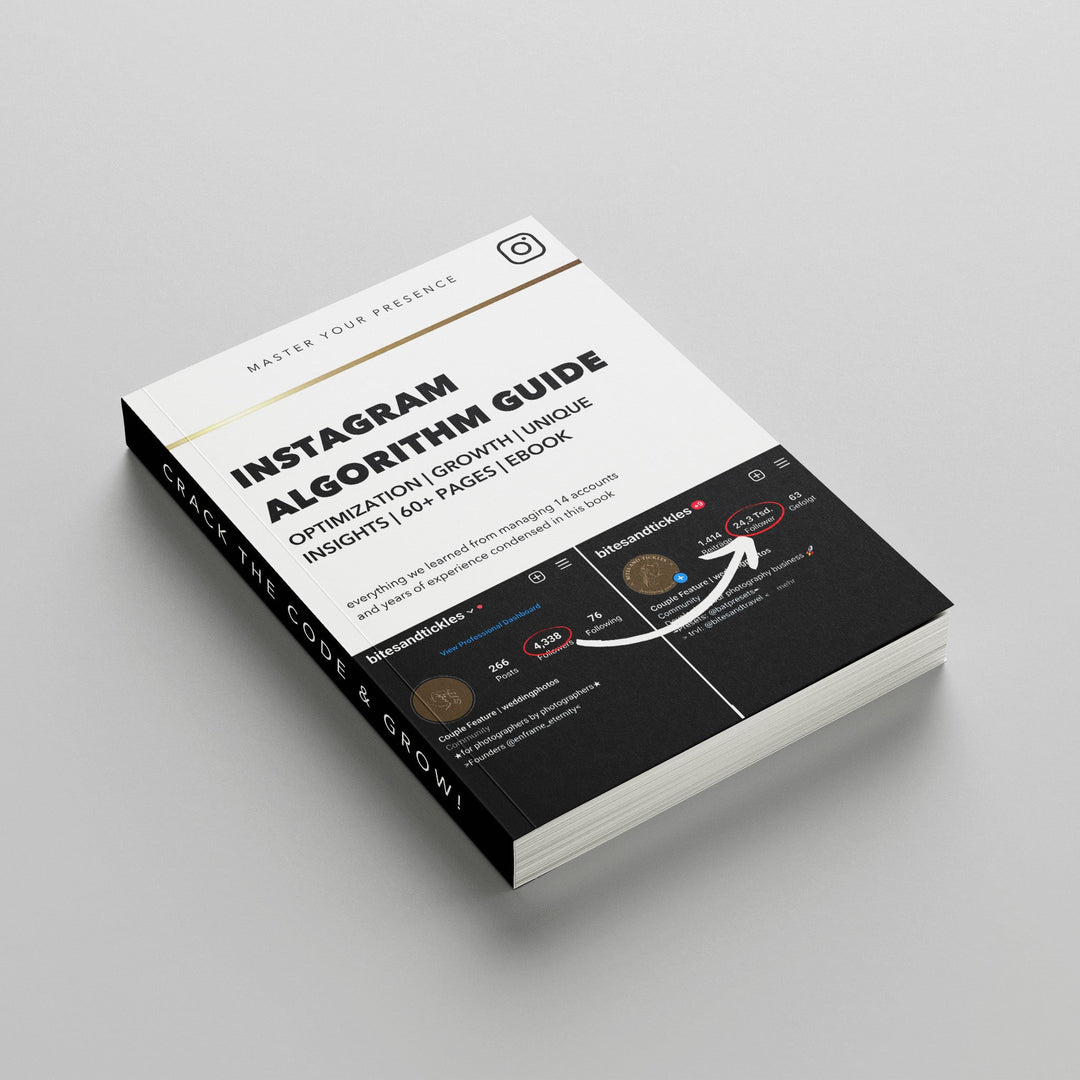How to Become a Wedding Photographer

Wedding photography is a creative and rewarding profession that allows you to capture one of the most important and memorable moments in people's lives. If you have a passion for photography and an eye for detail, becoming a wedding photographer can be a fulfilling career choice. In this article, we will guide you through the steps to become a wedding photographer, from developing your photography skills to establishing your own business. So, grab your camera and let's get started on this exciting journey!
1. Introduction
Wedding photography holds immense significance as it immortalizes the cherished memories of a couple's special day. It goes beyond capturing posed pictures; it tells a beautiful story, preserves emotions, and documents precious moments that will be treasured for years to come. As a wedding photographer, you have the privilege of being a part of these intimate celebrations and creating lasting visual legacies.
2. The Importance of Wedding Photography
Wedding photography plays a crucial role in preserving the magic and emotions of a wedding day. It enables couples to relive their special moments, share their joy with loved ones, and pass down their legacy to future generations. With the increasing emphasis on capturing authentic and candid moments, couples seek skilled photographers who can capture their unique love story in an artful and personalized way.
3. Developing Photography Skills
Before diving into the world of wedding photography, it's essential to hone your photography skills and understand the technical aspects of your camera and equipment. Here are some key steps to help you develop your photography skills:
Understanding Your Camera and Equipment
To capture stunning wedding photographs, you need to be intimately familiar with your camera and its features. Take the time to read the camera manual, experiment with different settings, and practice using various lenses and accessories.
Mastering Exposure and Composition
Understanding exposure, including aperture, shutter speed, and ISO, is crucial for creating well-exposed and balanced images. Additionally, mastering composition techniques, such as the rule of thirds and leading lines, will help you create visually appealing and captivating photographs.
Practicing Different Photography Techniques
Experiment with different photography techniques, such as long exposures, panning shots, and creative use of depth of field. This experimentation will allow you to expand your creative repertoire and add a unique touch to your wedding photographs.
4. Learning Wedding Photography Techniques
Wedding photography requires specialized skills and techniques to capture the essence of the day. Here are some important aspects to focus on:
Understanding Wedding Photography Styles
Familiarize yourself with different wedding photography styles, such as traditional, photojournalistic, and fine art. Each style has its own approach, and understanding them will help you adapt your photography to meet your clients' preferences.
Capturing Candid Moments
Candid moments are often the most cherished memories for couples. Develop the ability to blend into the background and capture genuine emotions, laughter, and tears. This skill will help you create a compelling narrative through your wedding photographs.
Posing and Directing Couples
Posing couples in a natural and flattering way is an art. Learn how to guide your subjects, create a comfortable atmosphere, and capture their authentic connection. Remember, it's about making them feel relaxed and capturing their love story, not creating forced or unnatural poses.
Working with Natural and Artificial Lighting
Weddings can present diverse lighting conditions. Learn to work with natural light, as well as master the use of flash and artificial lighting techniques. Understanding lighting will help you create beautifully lit images, regardless of the environment.
5. Building a Wedding Photography Portfolio
A strong portfolio is essential to showcase your skills and attract potential clients. Here are some effective ways to build your wedding photography portfolio:
Assisting Professional Wedding Photographers
Assisting experienced wedding photographers will provide invaluable hands-on experience and insights into the intricacies of shooting weddings. You'll learn how to handle various situations, manage time effectively, and capture key moments.
Shooting Friends' and Family Members' Weddings
Offer to photograph weddings of friends and family members at little to no cost. This will allow you to build your portfolio while gaining real-world experience. Treat these weddings with the same professionalism and dedication you would for paying clients.
Styled Shoots and Collaborations
Organize styled shoots or collaborate with wedding vendors, such as florists, makeup artists, and decorators. These collaborations provide opportunities to experiment creatively, showcase your unique style, and build a diverse portfolio.
6. Developing a Personal Brand
To stand out in the competitive wedding photography industry, developing a strong personal brand is essential. Here's how you can establish your own unique brand identity:
Defining Your Unique Style
Discover your photography style by exploring different genres, techniques, and editing styles. Experimentation will help you find your creative voice and establish a recognizable brand.
Creating an Engaging Website and Portfolio
Build a professional website and portfolio that showcases your best work. Highlight your unique style, display testimonials from satisfied clients, and include a clear call-to-action for potential clients to contact you.
Utilizing Social Media for Promotion
Leverage social media platforms, such as Instagram, Facebook, and Pinterest, to share your work, engage with potential clients, and build a community of followers. Consistently post high-quality images, behind-the-scenes peeks, and valuable wedding-related content.
7. Marketing and Networking
Effective marketing and networking strategies are crucial for reaching potential clients and building relationships within the wedding industry. Consider the following approaches:
Building Relationships with Vendors and Wedding Planners
Connect with wedding vendors and planners in your area. Attend industry events, join professional associations, and collaborate with them to create mutually beneficial relationships. Building a strong network can lead to valuable referrals and partnerships.
Joining Wedding Photography Associations and Groups
Become a member of local and national wedding photography associations and online communities. These organizations offer educational resources, networking opportunities, and platforms to showcase your work to a wider audience.
Showcasing Your Work at Bridal Shows and Expos
Participate in bridal shows and expos to showcase your portfolio, meet potential clients face-to-face, and establish your presence in the wedding industry. Create visually appealing booth displays and provide informative materials to leave a lasting impression.
8. Managing the Business Side
Running a successful wedding photography business requires effective management skills and attention to detail. Consider the following aspects:
Setting Up Your Wedding Photography Business
Register your business, obtain necessary licenses, and set up a professional and organized system for managing inquiries, bookings, contracts, and finances. Consider consulting with a legal or financial professional to ensure compliance with local regulations.
Pricing Your Services and Creating Packages
Determine your pricing structure based on factors such as your experience, market demand, location, and cost of doing business. Offer different packages to accommodate various client budgets and preferences.
Contract and Agreement Essentials
Create comprehensive contracts and agreements that outline your services, deliverables, payment terms, cancellation policies, and copyright terms. Consult with a lawyer to ensure legal protection and clarity for both you and your clients.
Managing Client Expectations and Communication
Maintain clear and open communication with your clients throughout the entire process, from the initial inquiry to the final delivery of photographs. Set realistic expectations, provide regular updates, and address any concerns promptly and professionally.
9. Delivering Exceptional Wedding Photography
On the wedding day, your primary focus should be capturing unforgettable moments and creating stunning images. Consider the following tips:
Preparing for the Wedding Day
Meet with the couple beforehand to discuss their vision, preferred shots, and timeline. Scout the venue, familiarize yourself with the surroundings, and create a shot list to ensure you capture all the essential moments.
Capturing the Key Moments
Throughout the day, be alert and ready to capture candid and emotional moments. Document the couple's preparations, the ceremony, the reception, and everything in between. Look for unique perspectives, small details, and interactions that tell a story.
Editing and Post-Processing Techniques
After the wedding, dedicate time to carefully select and edit the best images. Develop a consistent editing style that enhances the mood and aesthetics of your photographs. Pay attention to color correction, exposure adjustments, and retouching, while maintaining a natural and timeless look.
10. Providing Outstanding Customer Service
Delivering exceptional customer service will set you apart and leave a lasting impression on your clients. Focus on the following aspects:
Building Relationships with Clients
Establish a personal connection with your clients and make them feel valued. Listen to their preferences, offer guidance and support throughout the process, and create a comfortable and enjoyable experience.
Delivering High-Quality Prints and Products
Offer high-quality prints, albums, and other products that beautifully showcase your clients' wedding photographs. Partner with reputable printing labs and ensure the final products reflect the quality and craftsmanship of your work.
Timely Delivery and Communication
Set realistic timelines for delivering the final edited photographs and communicate them clearly with your clients. Provide regular updates on the progress and respond promptly to any inquiries or requests.
11. Continuous Learning and Growth
To thrive as a wedding photographer, it's crucial to continually learn, grow, and adapt to industry trends. Consider the following:
Attending Workshops and Seminars
Invest in your professional development by attending workshops, seminars, and conferences. These events provide opportunities to learn from industry experts, acquire new skills, and stay updated on the latest trends and techniques.
Keeping Up with Industry Trends
Stay informed about the latest trends in wedding photography, such as new posing styles, editing techniques, and popular wedding themes. While maintaining your unique style, incorporating contemporary elements can attract clients seeking fresh and innovative approaches.
Experimenting with New Techniques and Equipment
Embrace experimentation and try out new techniques and equipment to push your creative boundaries. Stay curious and open to exploring unconventional approaches that can elevate your photography to new heights.
12. Conclusion
Becoming a wedding photographer requires a blend of technical skills, artistic vision, business acumen, and a deep passion for capturing love stories. By following the steps outlined in this article, you can embark on an exciting journey to turn your passion for photography into a successful career. Remember, it takes time, dedication, and perseverance, but the joy of documenting love and creating cherished memories will make it all worthwhile.
13. FAQs
FAQ 1: How long does it take to become a wedding photographer?
The time it takes to become a wedding photographer varies depending on various factors, including your existing photography skills, dedication to learning, and the level of experience you seek. It can take several months to a few years to build a solid foundation and gain enough experience to confidently shoot weddings.
FAQ 2: What equipment do I need to start as a wedding photographer?
Starting as a wedding photographer requires essential equipment, including a professional-grade camera body, a range of lenses (such as a wide-angle, standard, and telephoto lens), external flashes, memory cards, and backup equipment. Invest in quality gear that suits your photography style and meets the demands of wedding photography.
FAQ 3: How much should I charge for my wedding photography services?
Determining your pricing depends on various factors, such as your experience, market demand, location, cost of doing business, and the services you offer. Conduct thorough market research, analyze competitors' pricing, and consider the value you provide to clients when determining your rates.
FAQ 4: How do I handle difficult lighting situations at weddings?
Difficult lighting situations are common at weddings, such as low-light indoor venues or harsh sunlight during outdoor ceremonies. Develop skills in using external flashes, understanding exposure, and post-processing techniques to handle these situations. Practice and experimentation are key to mastering challenging lighting conditions.
FAQ 5: What are some tips for capturing emotional moments during the ceremony?
To capture emotional moments during the ceremony, anticipate and be prepared for significant moments, such as the vows, the first kiss, and the exchange of rings. Stay focused, be present in the moment, and use a long lens to maintain distance while capturing intimate emotions. Be attentive to the couple and their guests, looking for tears, laughter, and genuine expressions of joy.









![[NEW] Clean Collection Presets Mobile - bitesandtickles](http://bitesandtickles-shop.com/cdn/shop/products/new-clean-collection-presets-mobile-256234.jpg?v=1685723321&width=1000)












Leave a comment